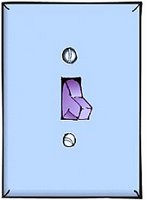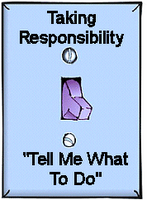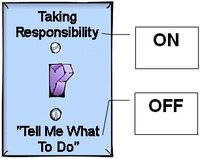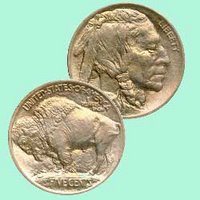Ute Winston: My Mentor, My Moirae
By Dr. Elizabeth Hendrix

During our journeys of becoming and of transformation, at times, we have amazing individuals who make us rethink our destinies, goals, and purposes. Those individuals (like the “moirae” who control our fates in mythology) weave and even influence our missions and visions in life (not only at the individual level but also at the citizen and change-agent levels). Ute Winston was my mentor, my “moirae,” because she was instrumental in changing the course of my life and my destiny (even with regard to my thinking and epistemology).

However, during these first (and most difficult) years for me, Ute Winston was my English professor at The University of AL. With first glance, students might notice that she walked with a limp, had beautiful, red hair, and had a German accent, but I never knew about the threads of her lived experiences and her destiny until a couple of years later. Since she liked students to ask questions, one day in an office visit, I asked her some questions—wanting to get to know her better. As a young student, I could not put all of the details together well then. I did not think about her age, her accent, and her limp in a holistic way, but she shared with me that she was a Holocaust survivor. Apparently, she was a child during the Holocaust, and this experience affected her vision and mission—especially with regard to teaching.
When I would use biased or offensive language without any forethought or real understanding of it either, she would correct me and dig deeper with me. For example, in one essay, I used the expression “dog eat dog world,” and Ute could not stand that phrase. However, she wanted me to be a reflective, critical thinker, and she asked me to delve into the origins of that expression and remember the horrors of that image historically. When I wrote that expression, there was no depth in it. It was a phrase that my mother used at times, and I was not considering the history or the negative connotations of it either. I was not thinking about the meaning and multiple meanings that it had, but Ute was. She awakened a multiple consciousness in me.
During my first two years at the university level, Ute was the only professor who tried to understand why I was missing her classes and who tried to help me. I loved her classes because the discussions always were deep, and she used a lot of Socratic questioning—really leaving us with more questions than we could ever answer. In addition, her classes were challenging to me—as well as her expectations. For the first time, I was struggling to make “As” with my work, and I thought that I wanted to die when I looked at how much reading we had for homework in each class. She worked with me as best she could though, and my writing (in particular) began to improve slowly.
INFLUENCE
One day, after I skipped about a week of classes, Ute had the class continue the discussions, and she pulled me out into the hall at the beginning of class. She inquired about my attendance, weaving this theme into other questions about my own goals and purposes and into questions about my needs as a student in her class. Genuinely, she was concerned about me, my well-being, and my life. In reality, she was relationship building with her interest and advice to me. At the time, she began encouraging me to have focus and to find my voice, and she even posited that I should take some time off and come back when I really knew what I wanted to do and why I was in school. She wanted me to articulate my goals and my purposes for life (which is pretty deep for a freshman).
At home, my mother could not believe this advice to me! She was outraged, but Ute was right. In January of 1993, my father, Lawrence Thomson Hendrix, passed away, and I took Ute’s advice. I left school for a reflective period, which I so badly needed at the time, and I began to care for my disabled mother who was blind in one eye after she had a stroke and who needed help with her errands and with everyday activities such as bathing. While I cared for her and dealt with the loss of my father, I thought a lot about Ute’s classes and her influence, and I truly began to rethink what I wanted to do with my life and why I wanted to obtain a degree in higher education. As a freshman, I started as a political science major—mainly because of the people around me then and because I thought that I might become a lawyer one day; however, after much reflection and thought, (and after the new thread that Ute was weaving for me) I changed my major to a double major in English and dance. I was much happier, much more driven, and definitely much more focused.

When I returned (for yet another transition), Ute guided me; she served as my advisor, and she spent hours with me—trying to help me get accepted into a summer program at Harvard University. I had to write an essay to get into a “Dance History/Writing for Dance” class, and I started with a 12-page draft. At the time, I thought the longer, the better for my papers, and I also thought that—with all of the work involved in longer papers—the more value that they had. I was so naïve then. However, Ute made me cut the paper down to two pages and only include the best parts. She also made me rethink what good writing was, and she looked out for my best interests. In addition to spending hours with me (with my horrible first drafts of that essay), she wrote a recommendation letter and sent it in for me. At the time, I had no idea what a good recommendation letter looked like, and I had no idea that those letters weave your fate literally in some ways. However, on the first day of class in my Harvard Summer School writing class, I learned about the significance and weight that recommendation letters have. My professor mentioned receiving her letter for me, and she even remarked that she had high expectations for me and for my work there. I left the class day—biting my nails and hoping that I would not disappoint my new professor and new peers but mostly hoping that I would never disappoint Ute.
Ute was a role model and mentor for me, but in reality, she really changed the course of my destiny. She was my “moirae,” and she created opportunities and influenced my life’s path and purpose. For Ute, giving back was much more than just giving back to one student or one institution; it was giving back in order to build a better world. Now, I hope that my students see the part of Ute in me that changed me and shaped me, and I hope that they see that I am trying to make the world a better place in which to live with them. Ute acted as a change agent in my life, and I hope that I am change agent too. Although she passed away last spring, I will never forget her or her impact on my life. She made a difference in the lives of everyone who came in contact with her. Ute pierced your soul with her words, kindness, and inspiration.









 Each image is related and connected to the other, but each is distinct from the other. After all, the Native American depicted on the nickel was a human, a member of a class of the most successful naturalists of all time. In fact, one of the adjectives sometimes used to describe Native Americans such as the one depicted is "noble." The buffalo however, is a beast, not self-aware like the Native American. In fact, the buffalo was the prey of the Native Americans and was used to provide everything from food to clothing to utensils.
Each image is related and connected to the other, but each is distinct from the other. After all, the Native American depicted on the nickel was a human, a member of a class of the most successful naturalists of all time. In fact, one of the adjectives sometimes used to describe Native Americans such as the one depicted is "noble." The buffalo however, is a beast, not self-aware like the Native American. In fact, the buffalo was the prey of the Native Americans and was used to provide everything from food to clothing to utensils. 

